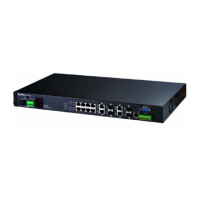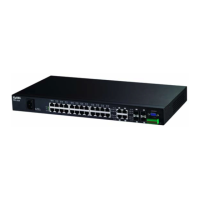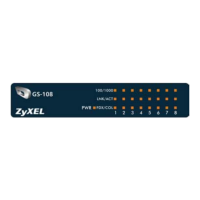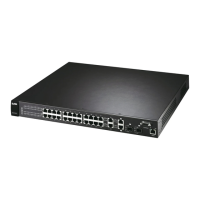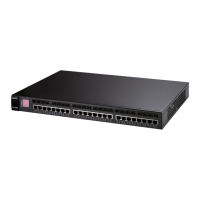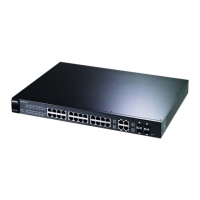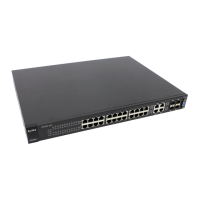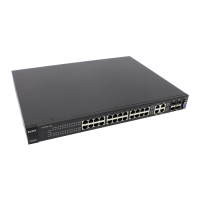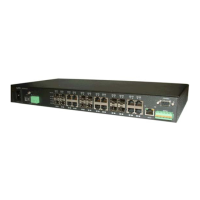
Do you have a question about the ZyXEL Communications MGS3700-12C and is the answer not in the manual?
| Brand | ZyXEL Communications |
|---|---|
| Model | MGS3700-12C |
| Category | Switch |
| Language | English |
This manual is intended for people who want to configure the Switch using the web configurator.
Lists other guides like Quick Start, Web Configurator Online Help, and Command Reference Guide.
Explains how warnings and notes are displayed in the guide, highlighting potential harm or important information.
Defines conventions for referring to the switch, product labels, keystrokes, and navigation paths.
Introduces the MGS3700-12C as a layer 2 Gigabit Ethernet switch and its management options.
Details the IPv6 features supported by the switch, including address assignment and dual-stack capabilities.
Provides recommendations for secure and effective switch management, including password changes and backups.
Describes placement options for the switch: desktop or rack-mounted, with ventilation clearance notes.
Step-by-step guide for installing the switch on a desktop surface, including proper placement and clearance.
Details the components on the front panel, including LEDs, dual personality interfaces, console, and management ports.
Explains how to connect to the console port using terminal emulation software and lists required parameters.
Describes the mini-GBIC slots for transceivers and provides instructions for installation and removal.
Introduces the HTML-based management interface and its requirements, such as browser versions and settings.
Provides instructions on how to start the web browser and access the switch using its IP address.
Explains the navigating components of a web configurator screen, including menu items and quick links.
Lists the configuration steps for initial setup: creating a VLAN, setting port VLAN ID, and configuring the management IP address.
Explains how to confine broadcast frames and configure ports as members of a VLAN group.
Guides on setting up the switch's IP address for management purposes, including default values.
Provides a step-by-step example of configuring DHCP snooping for IP address assignment and security.
Explains how to configure the switch to forward DHCP client requests to a specific DHCP server.
Details how to automatically shut down ports or discard packets upon detecting errors like loops or excessive ARP requests.
Introduces screens for configuring system info, general setup, switch setup, IP setup, and port setup.
Explains how to configure general settings like system name, location, and contact person's name.
Details how to configure the switch IP address, default gateway, domain name server, and management VLAN ID.
Explains tagged VLANs, their use in identifying membership across bridges, and the frame format.
Describes how to use static VLANs to control frame forwarding based on VLAN tags or port membership.
Explains how to group traffic into logical VLANs based on source IP subnet for traffic prioritization.
Explains how (R)STP detects and breaks network loops, providing backup links between network devices.
Guides on configuring RSTP settings, including bridge priority, hello time, and port states.
Introduces methods for validating port access using IEEE 802.1x or MAC authentication via RADIUS.
Details the steps to activate port authentication methods and configure RADIUS server settings.
Explains IP source guard's role in filtering unauthorized DHCP and ARP packets using a binding table.
Guides on enabling DHCP snooping, specifying the DHCP server VLAN, and configuring the snooping database.
Describes the maintenance screen for managing firmware and configuration files, including upgrade and restore options.
Provides steps to reset the switch to its factory default configuration settings.
Explains how to back up the current switch configuration to a computer for later restoration.
Details access control for console, Telnet, SSH, Web, and SNMP sessions, including session limits.
Explains the Simple Network Management Protocol (SNMP) used for managing and monitoring network devices.
Describes how to set up administrator and non-administrator login accounts for web configurator access.
Explains how to use the Diagnostic screen to check system logs, ping IP addresses, and perform port tests.
Provides troubleshooting steps for issues like the switch not turning on or incorrect LED behavior.
Addresses common problems related to forgetting IP addresses, usernames, or passwords, and accessing the login screen.
Details the procedure for removing and installing fan modules, including fuse replacement.
